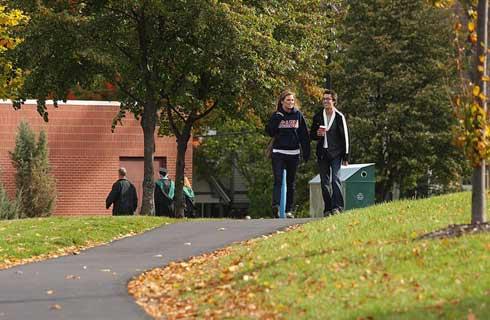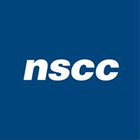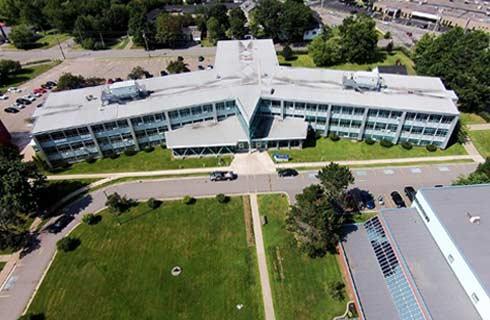地理科学高级大专-遥感
Graduate Certificate in Remote Sensing

学历文凭
Graduate Certificate

专业院系

开学时间

课程时长

课程学费

国际学生入学条件
Diploma or undergraduate degree in a related field of study such as archaeology, geography, forestry, geology, resource management, urban planning, science, engineering, computer science, marketing, commerce, economics or business administration.
International English Language Testing Systems (IELTS Academic Test) – minimum score of 6.0 on each test (Listening, Reading, Writing, Speaking).
Test of English as a Foreign Language (TOEFL) – minimum test scores of 80 on the Internet-Based Test (TOEFL iBT), 60 on the Paper-Delivered Test, or 550 on the Paper-Based Test.
Official transcripts – You must submit your official transcript(s) for courses required for admission. We request verification of your complete academic history, including any college or university you attended
Interim transcripts – If you're currently enrolled in courses required for admission, you must submit an interim transcript. Your official final grades must be submitted by the deadline specified in your admission letter.
Transcripts must be emailed to Admissions at documents@nscc.ca by the issuing institution. Official transcripts may also be dropped off in a sealed envelope at any NSCC campus or mailed to NSCC Admissions using the address to the left.
If you're a current Nova Scotia high school student, please provide your Nova Scotia student ID number (can be found on your high school transcript or in PowerSchool) when you apply. We'll retrieve your transcript on your behalf.
International English Language Testing Systems (IELTS Academic Test) – minimum score of 6.0 on each test (Listening, Reading, Writing, Speaking).
Test of English as a Foreign Language (TOEFL) – minimum test scores of 80 on the Internet-Based Test (TOEFL iBT), 60 on the Paper-Delivered Test, or 550 on the Paper-Based Test.
Official transcripts – You must submit your official transcript(s) for courses required for admission. We request verification of your complete academic history, including any college or university you attended
Interim transcripts – If you're currently enrolled in courses required for admission, you must submit an interim transcript. Your official final grades must be submitted by the deadline specified in your admission letter.
Transcripts must be emailed to Admissions at documents@nscc.ca by the issuing institution. Official transcripts may also be dropped off in a sealed envelope at any NSCC campus or mailed to NSCC Admissions using the address to the left.
If you're a current Nova Scotia high school student, please provide your Nova Scotia student ID number (can be found on your high school transcript or in PowerSchool) when you apply. We'll retrieve your transcript on your behalf.
IDP—雅思考试联合主办方

雅思考试总分
6.0
- 雅思总分:6
- 托福网考总分:80
- 托福笔试总分:550
- 其他语言考试:Pearson Test of English Academic (PTE) - minimum test score of 55.
CRICOS代码:
申请截止日期: 请与IDP联系 以获取详细信息。
课程简介
遥感专业是“地理科学”高级文凭课程的第二个选项。遥感是对地观测系统及其应用的研究。实际上,它通常与数字地理空间图像的应用计算机分析相关联。遥感是一门快速发展的学科,在林业,地质,国防/情报,灾害管理,保护,海洋学,气象学,城市分析和农业等领域具有多种应用。通过使用行业标准软件的实践经验,学习如何解释卫星图像,处理数字图像并了解遥感和航空成像平台的理论基础。遥感与地理信息系统(GIS)和全球定位系统(GPS)紧密结合。这种关注的令人兴奋的方面之一是有机会使用GIS和GPS在现场应用图像解释技能。
Remote sensing professionals map, measure, and monitor our earth using a range of sensors and cutting-edge technology. Using camera systems, laser scanners (LiDAR) and microwave sensors (RaDAR), they collect, analyze, and report on spatial data. This provides organizations with insights to help solve problems and support decision making in the environmental and natural resources sectors and beyond. In this graduate certificate program, you develop a foundation of Geographic Information Systems (GIS) skills that are enhanced by specialized training. Using industry standard software, you manipulate, analyze, and present data from spaceborne, airborne, and terrestrial systems.<br>Through practical hands-on projects that build on your foundational skills you learn how to:<br>Pilot Remotely Piloted Airborne Systems (RPAS) drones and utilize land-based Global Navigation Satellite Systems (GNSS) survey equipment to collect data.<br>Source available Earth observation (EO) data from government, industry, and research organizations.<br>Interpret and analyze LiDAR, RaDAR, multispectral, hyperspectral and thermal imagery.<br>Present 2D and 3D geospatial information in reports, plans, and digital or hard-copy maps<br>Apply geodesy, programming, and database fundamentals.<br>Integrate, manipulate and manage remotely sensed datasets in a GIS to uncover insights.<br>This program is offered at the Centre of Geographic Sciences (COGS), Canada's largest geomatics-focused learning environment, and prepares you for a career in the global geomatics sector.
Remote sensing professionals map, measure, and monitor our earth using a range of sensors and cutting-edge technology. Using camera systems, laser scanners (LiDAR) and microwave sensors (RaDAR), they collect, analyze, and report on spatial data. This provides organizations with insights to help solve problems and support decision making in the environmental and natural resources sectors and beyond. In this graduate certificate program, you develop a foundation of Geographic Information Systems (GIS) skills that are enhanced by specialized training. Using industry standard software, you manipulate, analyze, and present data from spaceborne, airborne, and terrestrial systems.<br>Through practical hands-on projects that build on your foundational skills you learn how to:<br>Pilot Remotely Piloted Airborne Systems (RPAS) drones and utilize land-based Global Navigation Satellite Systems (GNSS) survey equipment to collect data.<br>Source available Earth observation (EO) data from government, industry, and research organizations.<br>Interpret and analyze LiDAR, RaDAR, multispectral, hyperspectral and thermal imagery.<br>Present 2D and 3D geospatial information in reports, plans, and digital or hard-copy maps<br>Apply geodesy, programming, and database fundamentals.<br>Integrate, manipulate and manage remotely sensed datasets in a GIS to uncover insights.<br>This program is offered at the Centre of Geographic Sciences (COGS), Canada's largest geomatics-focused learning environment, and prepares you for a career in the global geomatics sector.
相关申请
 预科
预科 奖学金
奖学金 实习机会
实习机会 在校学习
在校学习 跨境学习
跨境学习 校园授课-线上开始
校园授课-线上开始 在线/远程学习
在线/远程学习
开学时间&学费
学费信息仅供参考,请与IDP联系以获取详细信息
| 开学时间 | 时长 | 学费 | 地点 |
|---|
本校相关课程

学术和职业联系证书
学历文凭
Bachelor Degree
开学日期
课程费用总额


成就证书
学历文凭
Bachelor Degree
开学日期
课程费用总额


成瘾社区外展高级文凭
学历文凭
Graduate Certificate
开学日期
课程费用总额


飞机维修工程师文凭(航空电子)
学历文凭
Bachelor Degree
开学日期
课程费用总额


飞机维修工程师文凭(机械)
学历文凭
Bachelor Degree
开学日期
课程费用总额


飞机维修工程师证书(结构)
学历文凭
Bachelor Degree
开学日期
课程费用总额










 加拿大
加拿大
